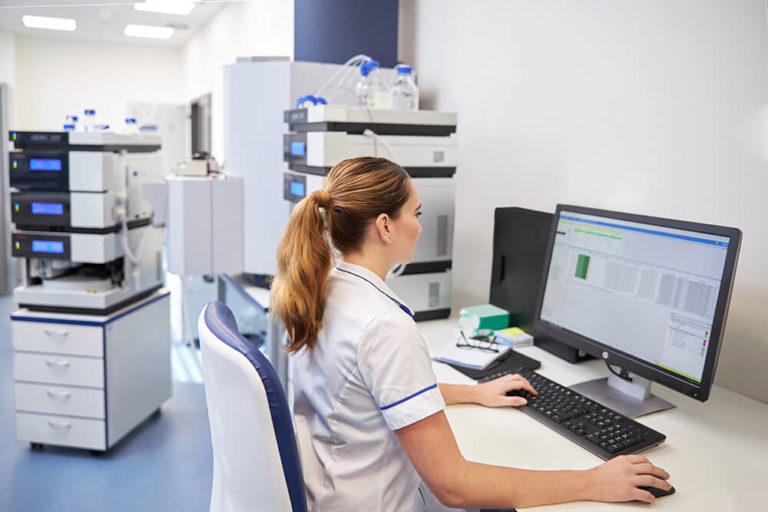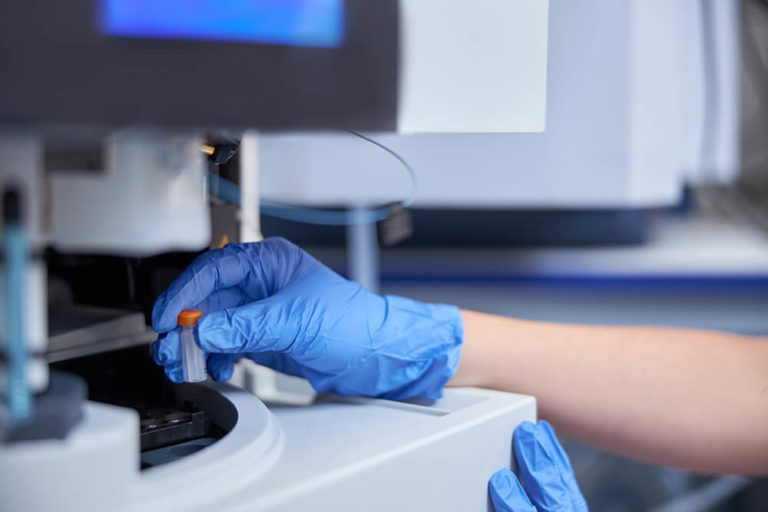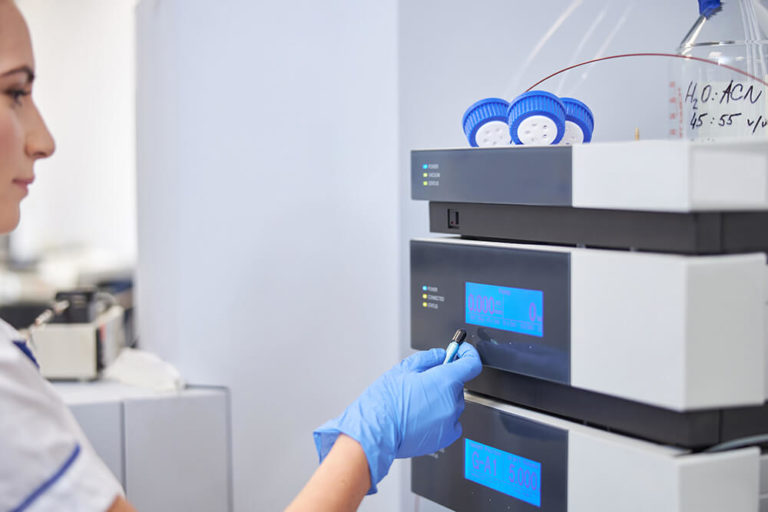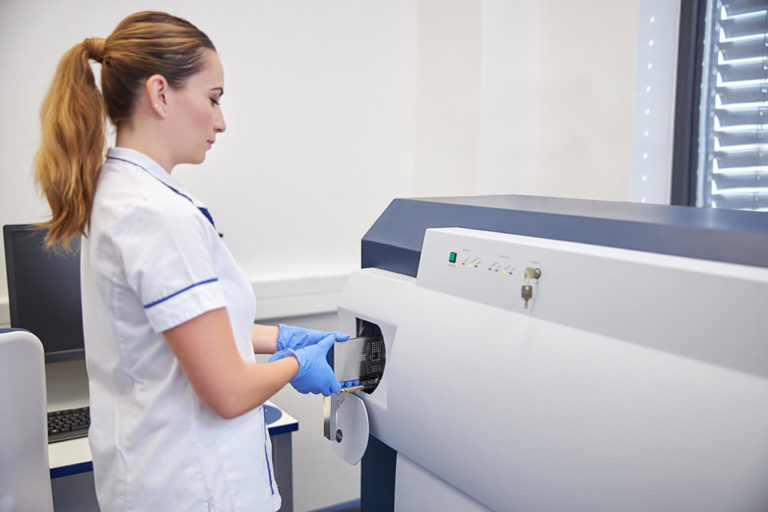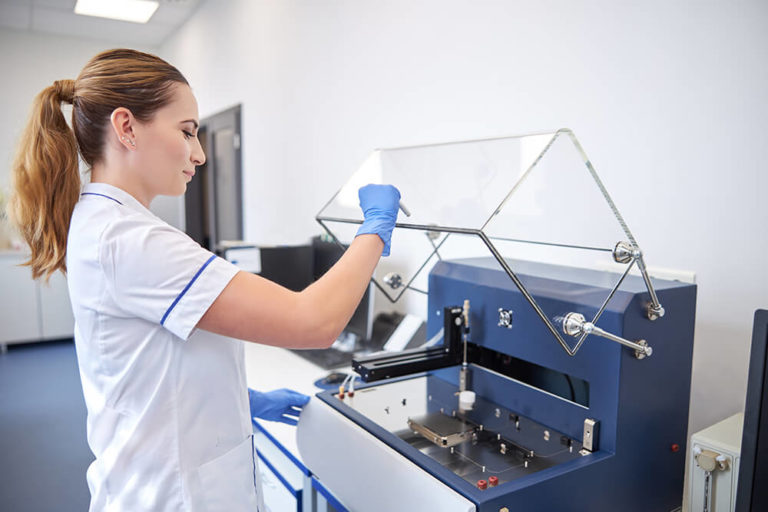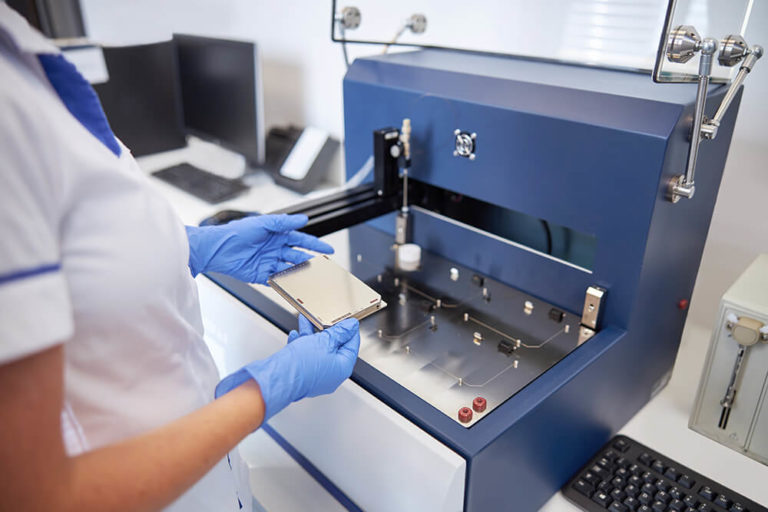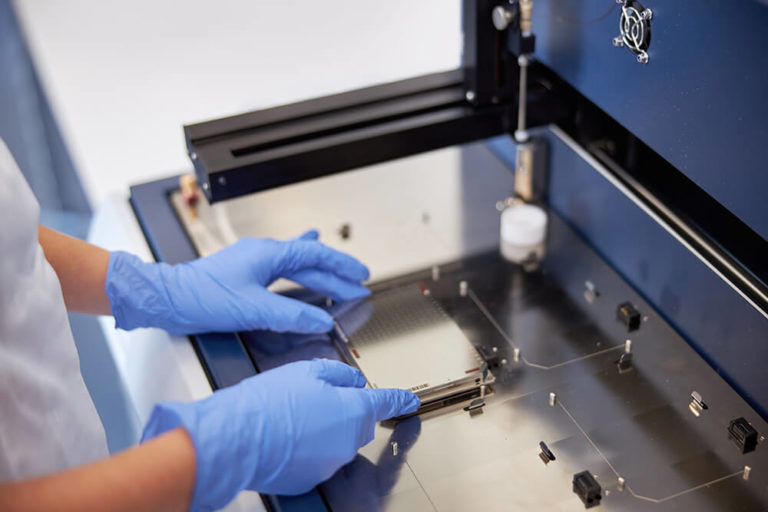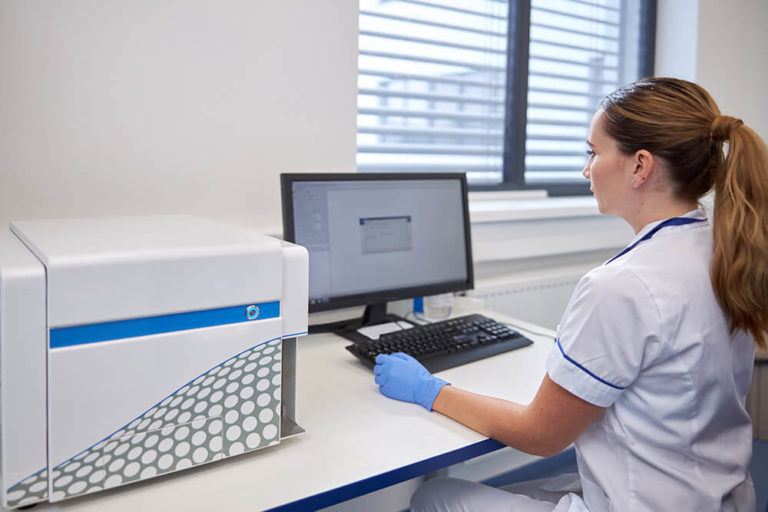Proteomics laboratory
Proteomics laboratory
Proteomic analysis allows the determination and quantification of hundreds to thousands of individual proteins in any given biological sample. It uses a combination of liquid chromatography with mass spectrometry for rapid and reliable identification of monitored analytes. Proteomic analysis is used in basic scientific research to identify proteins with interesting properties, as well as in applied biomedical research in determining different protein profiles and identifying potential biomarkers.
The infrastructure of the proteomic laboratory is interconnected in terms of hardware and software. Liquid chromatographs (UHPLC, nanoHPLC) are pre-separation devices that are connected physically and electronically (via software) to our mass spectrometers (MALDI TOF/TOF, ESI-QTOF). Mass spectrometers use two complementary ionization techniques delivering measurement data which will then be processed on a single software bioinformatics platform.
The proteomic laboratory is fully equipped with basic laboratory equipment for sample preparation and contains the following key equipment:
- mass spectrometer for characterization of MALDI-TOF/TOF proteins (ultrafleXtreme, Bruker),
- high-resolution mass spectrometer for qualitative and quantitative proteomics and metabolomics ESI-QTOF (impactII, Bruker),
- liquid chromatograph for peptide separation – nanoHPLC (UltiMate 3000 RSLCnano System, Thermo Fisher Scientific),
- liquid chromatograph for separation in metabolomics and toxicology with DAD detector (UltiMate 3000 System, Thermo Fisher Scientific),
inverted microscope, - flow cytometer (CytoFlex, Beckman Coulter).
Implementation of projects with ITMS code 26210120041
Implementation of the BIOMEDIRES II project
